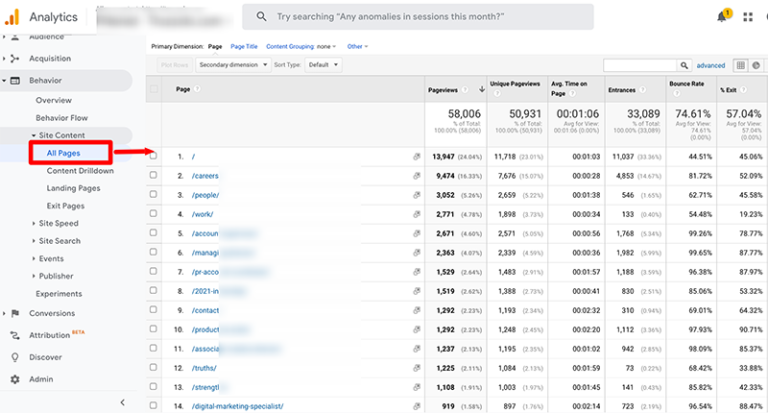
Spring means it’s not only time to enjoy the fresh air but also to think about the tradition of spring cleaning.
If it helps reduce stress and eliminate waste in your home (and other aspects of your life), why wouldn’t it be helpful with your website?
Over time, you may make additions to your home, fill your closets, and change rooms to meet emerging needs.
The home you reside in today may not resemble what you moved into years ago.
This can also be said of your website.
Many website owners tend to add content without removing what’s no longer needed.
Pages are created to suit events, marketing plans, and other activities.
They are then often forgotten.
While you may not see or remember this content, searchers may be stumbling upon it and getting a less-than-favorable first impression of your website.
Preventative Maintenance For Your Site
Website cleaning makes three different parties’ lives easier.
A clean website lets you traverse your admin section and review content without sifting through a sea of URLs.
Your users will also feel comfortable visiting your website because the content they want will be easier to access.
Finally, we must do whatever we can to appease crawling search engines.
Search engines can review your site faster (aside from load speed considerations) if you provide only the essential content.
This isn’t a comprehensive website maintenance plan. Rather, these few activities should be easy enough to complete quickly and will leave your site that much cleaner.
I promised you just three steps, so here goes.
1. Assessing The Job At Hand
Our first step in the cleaning process will be to gain a full view of every website page.
A website analysis tool like Screaming Frog can provide an organized list view of all website URLs.
Next, eliminate areas of the export via sorting to reduce pages we do not need to review.
Depending on the nature of your website, this may include non-HTML pages, redirected pages, and non-indexed pages.
You may find yourself uncovering some surprising content.
These can include:
- A large number of old newsletters, blog posts, etc.
- Outdated resource content.
- Unintentional page duplication based on technical issues.
- Old pages created solely for ranking consideration, a.k.a. “Old School SEO.”
- Irrelevant pages, ex., author or bio content for employees.
This exercise is a great way to see a backend view of your website and often can reveal technical issues that may exist.
2. Cleaning Up The Clutter
Now, it may look like you have a clean website.
However, it’s also a good time to look at how well your content performs.
Your current list of site URLs all appear to be valid, content-filled pages, but do they need to exist?
Some of our spring cleaning exercises relieve our confusion in website management, but let’s take a minute to help the crawling bots out.
In Google Analytics, look at the last years’ worth of website page views to determine what content your visitors want to see on your website.
The reason for 12 months of review is that industry and behavioral seasonality can cause bumps in content demand.
 Image from Google Analytics, March 2022
Image from Google Analytics, March 2022Take a gander at the lower right corner.
It may be surprising just how many pages are driving page views for your website over a year.
You may see anomalies in parameter generation due to advertising, but you may also notice that some of your perceived “valid” content is not highly consumed.
This view may seem a little bit daunting but pause for a moment to begin your sort.
Perform an export and prepare to look for a few key areas.
We want to look at the content that only has a few yearly page views as well as user behavior.
Pay close attention to the pages with a high exit rate.
This may be due to bad design layout or lacking internal navigation. It may also show that the content is either in need of refreshment or retirement.
3. Sweeping Up On-Page
To this point, we have concentrated solely on URLs.
Now that we have cleaned up unnoticed content waste and lower value content let’s see how we can clean the in-content areas of website pages.
We have cleaned out the long-forgotten closets, but now it is time to look at what lies on the “living room floor” of your most visited website pages.
For this, we will rely on a heatmapping tool such as CrazyEgg or my favorite, LuckyOrange.
From our previous exercise, we reviewed website pageviews based on count.
First, review the most trafficked pages.
Pay special attention to the exit rate column, which is an important indicator of poor page performance.
Under pages of consideration, review user behavior to understand where click behavior shows page area preference.
By reviewing your content in both mouse activity, click activity, and scroll depth, you can gain insight into where user attention lies on page.
Some websites still suffer from ancient SEO tactics of extremely lengthy content.
While we have worked to remove full pages of content, you may be ripe for the process of cleaning up in-content areas of website pages.
In Screaming Frog, you can also sort URLs by word count.
This could help you understand where your long form content resides on your website.
All Clear
Through website content review, some content removal, and some polishing, you have now completed what could be a yearly tradition of spring cleaning your website.
Websites should be a functional connection between you and your online audience.
Eliminating unnecessary content can leave you a happier website manager, give your audience a clear path, and make it easier for search engines to crawl your website.
More resources:
Featured Image: Comaniciu Dan/Shutterstock







